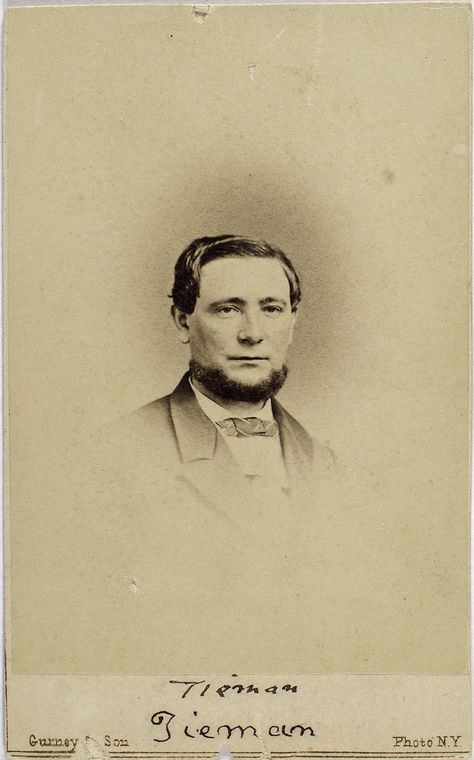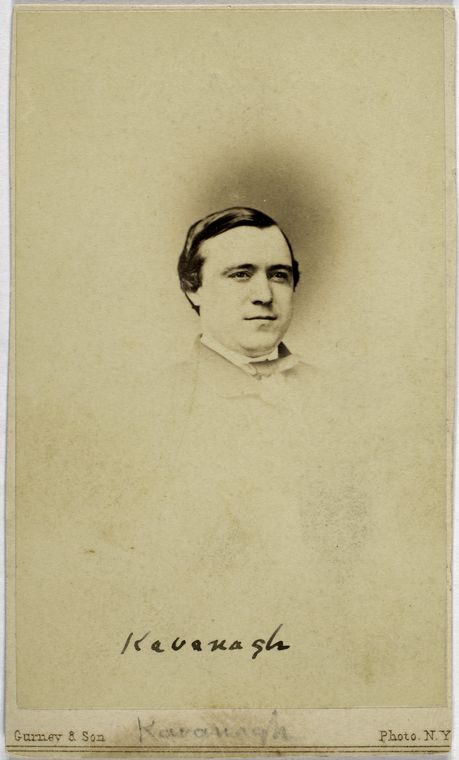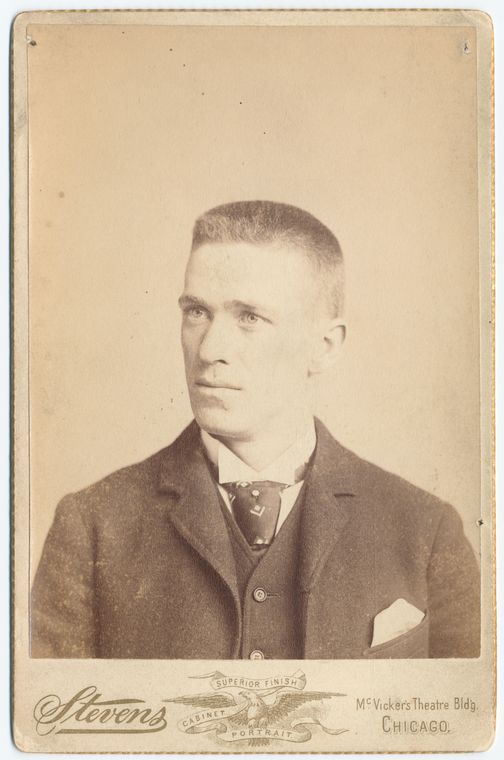
Baseball historian Tom Shieber, the man behind the Baseball Researcher blog, recently stumbled across these two photos in the digital archives of the New York Public Library. Tiernan was identified as the man in both photos. According to Shieber, Tiernan was a famous player during his day, having amassed 1,838 hits and 428 stolen bases with the New York Giants between 1887 and 1899.
But how could these photos be of the same person? The images appear so obviously different. Shieber looked more closely at the photograph on the left and found on the back the name of a photo studio. Through a little sleuthing, Shieber discovered the studio was not even in existence when Tiernan was playing for the Giants. Even closer inspection revealed that the name printed on the front wasn’t “Tiernan,” but rather “Tieman.”
What the baseball historian had stumbled across was not a photo of a famous 19th Century baseball star, but rather a famous 19th Century billiards player. The image on the left is that of Philip Tieman, who competed in some of this country’s earliest national tournaments. The image was misfiled in the archives.
Pool occupied a very different place in the public consciousness during the 19th Century. It was a sport that was then growing in popularity — so much so that it would even vie with baseball for the public’s attention. Tieman matched up against some of pool’s earliest stars, including the man now remembered as the Father of American Pool: Michael Phelan. In 1865, for instance, the two men competed in an exhibition in Ohio. According to the New York Times account: “The players took special pains to make intricate and general display shots, and their efforts being crowned with unusual success, and the audience being a highly appreciative one, rendered the affair brilliant in the extreme.”
The match was won by Phelan, a man now famous for having also won the first national billiards stakes match, for being the first to place diamonds on pool tables, and for authoring the first American book about billiards. That’s a picture of Phelan just below, at the left. He was inducted into the Billiard Congress Hall of Fame in 1993.
In 1864, Tieman matched up with Dudley Kavanaugh in Irving Hall in New York. The Times described it as the most anticipated pool match in the nation. There was a packed house for the event. Unfortunately

I consulted Mike Shamos, curator of the Billiards Archives, about Shieber’s find. Mike was very much excited about it and confirmed that a separate image in the Archives confirms the baseball historian’s discovery.

Recent Comments